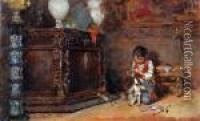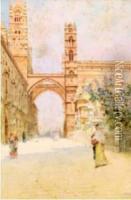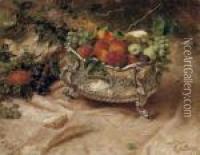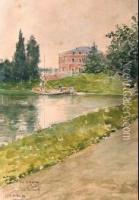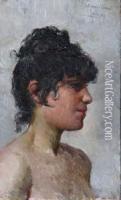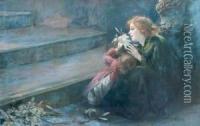Giuseppe De Sanctis Paintings
Giuseppe De Sanctis was an Italian painter, born on October 11, 1858, in the small town of Morra De Sanctis, near Avellino. He is known for his role in the Italian verismo movement, a style that emphasized naturalism and the depiction of everyday life.
De Sanctis displayed artistic talent early on and was enrolled in the Institute of Fine Arts in Naples at just 12 years of age. He studied under the guidance of Domenico Morelli, a well-known Italian painter of the time who had a significant influence on De Sanctis's style. Morelli's encouragement to study the works of the Old Masters would greatly inform De Sanctis's approach to painting.
After his studies, De Sanctis traveled to Rome, where he was exposed to the burgeoning verismo movement. Verismo was an Italian form of realism that not only reflected the appearance of subjects but also sought to capture their inner lives and emotions. This experience had a profound impact on his work, and he became one of the movement's proponents.
De Sanctis's paintings often focused on scenes of rural life, especially the peasantry of Southern Italy. His works were characterized by their realism and empathy, capturing the harsh realities of life for the poor. Some of his most notable paintings include 'After the Strike' and 'The Orphans', both of which showcase his commitment to depicting social issues with honesty and compassion.
Throughout his career, De Sanctis also served as a professor at the Academy of Fine Arts in Naples. He influenced a new generation of Italian artists, teaching not only the techniques of painting but also the importance of using art to reflect the social conditions of the time.
Giuseppe De Sanctis died on November 23, 1924, in Naples. His legacy is preserved in the art that he created and in the lessons he imparted to his students. His works continue to be appreciated for their contribution to the verismo movement and for their insight into the human condition.



